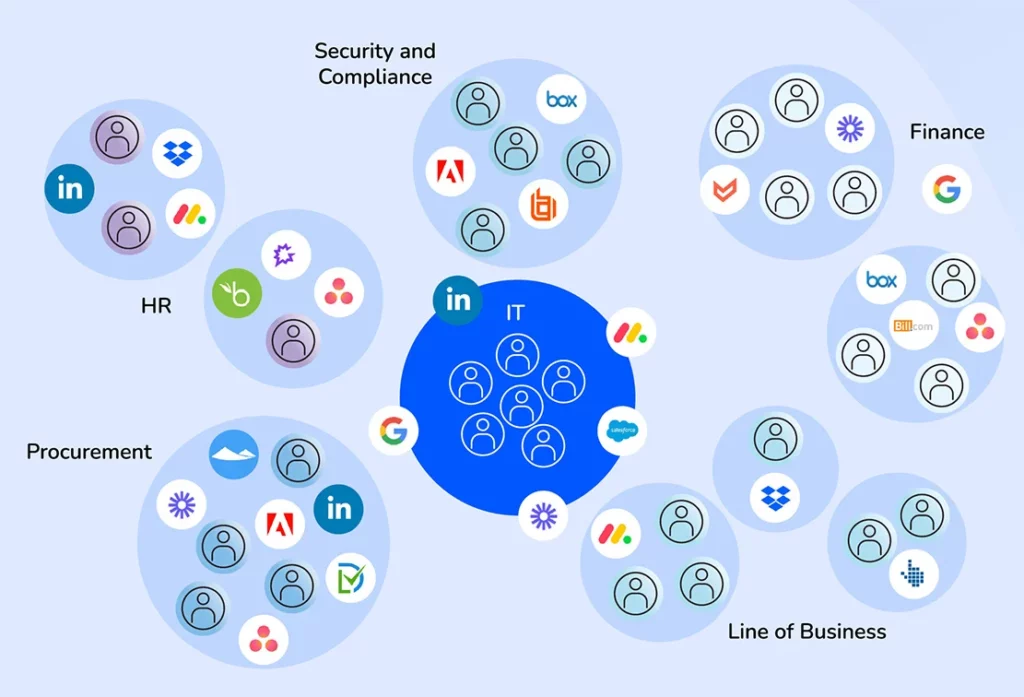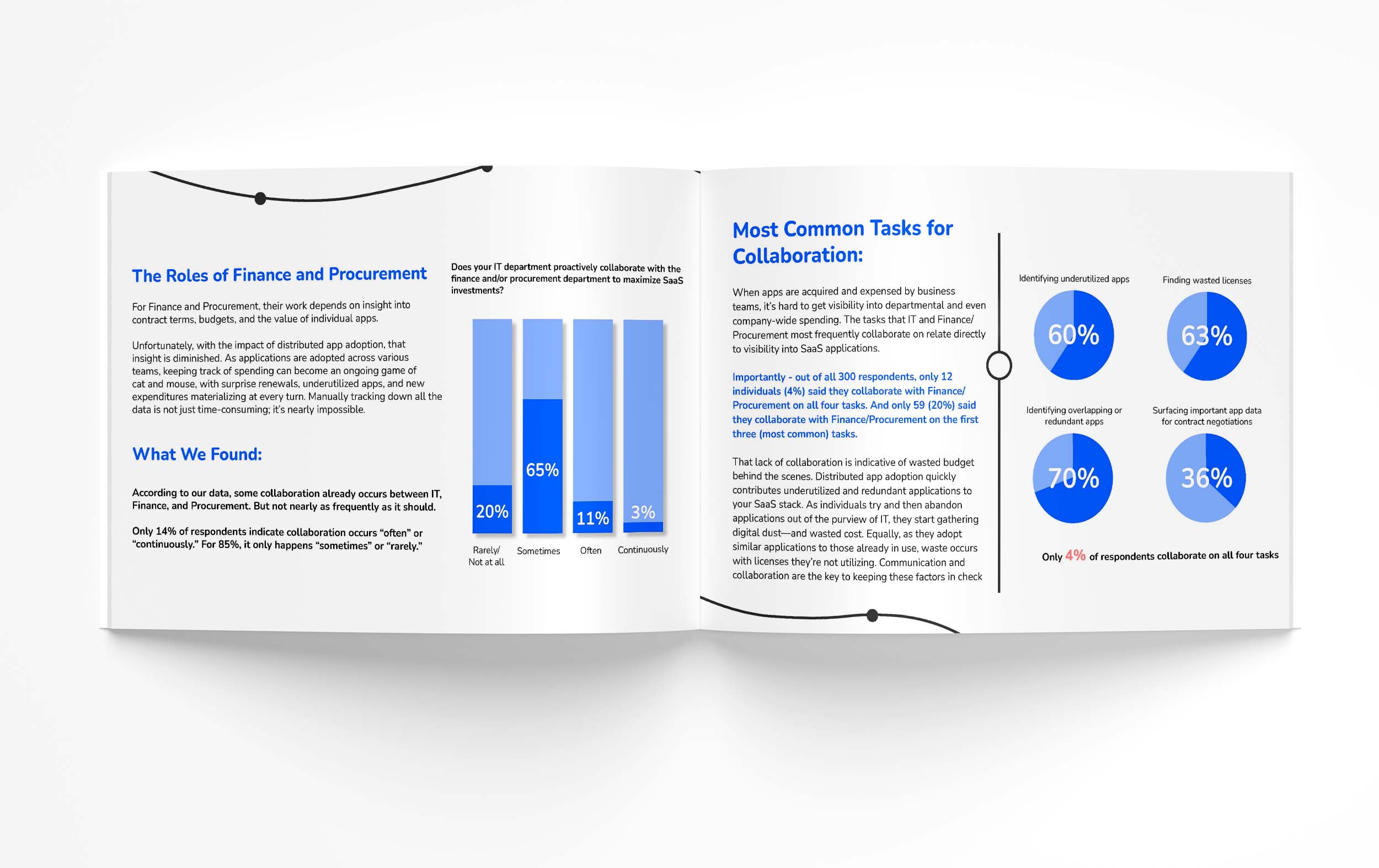The State of SaaS at Work: Collaboration in a Distributed Workplace
We asked 300 IT Directors, IT Managers, and CIOs about how their company collaborates around cloud applications—what’s working and what’s not.
Keep scrolling to learn more about what’s inside the report.
Read the Report
Collaboration in a distributed workplace isn’t easy. Learn how IT pros are coping and find out how you can succeed.
The information you provide will be used according to our Privacy Policy
By The Numbers
The difference between expectation and reality
Today’s workforce thrives on tech.
Since the first cloud app was adopted, we’ve witnessed a continuous flood of SaaS adopted by employees outside of IT. And while easy-to-access software is exciting, it comes with a cost.
The ownership and administrative responsibilities of these apps become scattered. Unfortunately, that fragmentation often leads to overlooked admin responsibilities, knowledge silos, hidden app data, poorly managed contracts, and ultimately, broken collaboration which results in tremendous monetary and time costs.
With that in mind, we wanted to know how IT feels about its cross-department collaboration efforts.
For 90%, they think it’s going great! However, as we asked more questions, a different reality emerged.
For example, only 11% of IT pros say they collaborate with Finance or Procurement “often,” and only 4% say they collaborate on just four essential tasks. Clearly, something doesn’t add up.
In this report, we look under the hood of how businesses currently collaborate and identify ways to progress toward the promise of genuine collaboration and get the most out of SaaS applications.
– Uri Haramati, CEO and Co-Founder of Torii
How Distributed SaaS
Broke the Modern Workplace
- Today’s workplace feels fractured. As each team and employee adopts new tools outside of IT’s purview, barriers to collaboration form. Silos are constructed, time is wasted, contract renewals are concealed, and critical visibility is lost.
We asked IT about their collaboration with each of these core, business units:
- Security and Compliance
- Human Resources
- Procurement and Finance
- Line of Business


